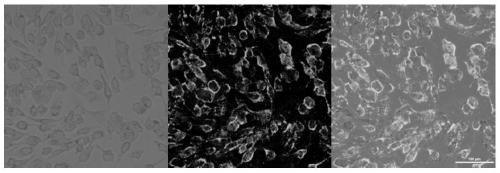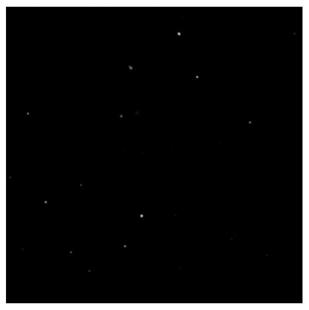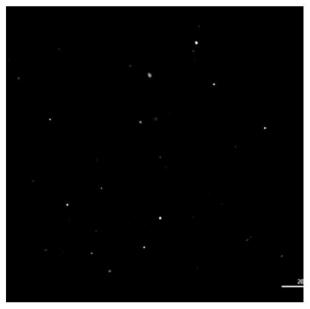Construction method of rare earth up-conversion nano-probe labeled virus
A rare earth up-conversion and nano-probe technology, applied in the field of biotechnology and materials, can solve the problems of unfavorable long-term tracing, poor photostability, high background noise, etc., and achieve the effect of high scientific research application prospects
- Summary
- Abstract
- Description
- Claims
- Application Information
AI Technical Summary
Problems solved by technology
Method used
Image
Examples
Embodiment 1
[0030] Preparation of envelope biotinylated influenza virus
[0031] MDCK cells were cultured in a cell culture dish with a diameter of 10 cm, DSPE-PEG2000-Biotin reagent (final concentration 1 μg / ml) was added to the medium, and the culture dish was placed in a 37°C carbon dioxide incubator for 18-24h. When the cell density in the culture dish grows to 80-90%, discard the medium, wash the cells twice with serum-free medium to remove residual serum, add 5ml serum-free medium and 10μl influenza virus concentrate, mix well and place Incubate in a carbon dioxide incubator at 37°C for 2 hours, shaking the culture dish every half hour. After incubation, the supernatant was discarded, and the complete medium containing 2% FBS and DSPE-PEG2000-Biotin was added. Place the culture dish in a 37°C carbon dioxide incubator for 48-72h. When 50% of the cells died, the cells and supernatant were collected in a centrifuge tube, and the cells were completely broken up by repeated freezing an...
Embodiment 2
[0033] Preparation of envelope biotinylated influenza virus
[0034] MDCK cells were cultured in a cell culture dish with a diameter of 10 cm, DSPE-PEG2000-Biotin reagent (final concentration 5 μg / ml) was added to the medium, and the culture dish was placed in a 37°C carbon dioxide incubator for 18-24h. When the cell density in the culture dish grows to 80-90%, discard the medium, wash the cells twice with serum-free medium to remove residual serum, add 5ml serum-free medium and 10μl influenza virus concentrate, mix well and place Incubate in a carbon dioxide incubator at 37°C for 2 hours, shaking the culture dish every half hour. After incubation, the supernatant was discarded, and the complete medium containing 2% FBS and DSPE-PEG2000-Biotin was added. Place the culture dish in a 37°C carbon dioxide incubator for 48-72h. When 50% of the cells died, the cells and supernatant were collected in a centrifuge tube, and the cells were completely broken up by repeated freezing an...
Embodiment 3
[0036] Preparation of envelope biotinylated influenza virus
[0037] MDCK cells were cultured in a cell culture dish with a diameter of 10 cm, DSPE-PEG2000-Biotin reagent (final concentration: 50 μg / ml) was added to the culture medium, and the culture dish was placed in a 37°C carbon dioxide incubator for 18-24h. When the cell density in the culture dish grows to 80-90%, discard the medium, wash the cells twice with serum-free medium to remove residual serum, add 5ml serum-free medium and 10μl influenza virus concentrate, mix well and place Incubate in a carbon dioxide incubator at 37°C for 2 hours, shaking the culture dish every half hour. After incubation, the supernatant was discarded, and the complete medium containing 2% FBS and DSPE-PEG2000-Biotin was added. Place the culture dish in a 37°C carbon dioxide incubator for 48-72h. When 50% of the cells died, the cells and supernatant were collected in a centrifuge tube, and the cells were completely broken up by repeated f...
PUM
 Login to View More
Login to View More Abstract
Description
Claims
Application Information
 Login to View More
Login to View More - R&D
- Intellectual Property
- Life Sciences
- Materials
- Tech Scout
- Unparalleled Data Quality
- Higher Quality Content
- 60% Fewer Hallucinations
Browse by: Latest US Patents, China's latest patents, Technical Efficacy Thesaurus, Application Domain, Technology Topic, Popular Technical Reports.
© 2025 PatSnap. All rights reserved.Legal|Privacy policy|Modern Slavery Act Transparency Statement|Sitemap|About US| Contact US: help@patsnap.com



